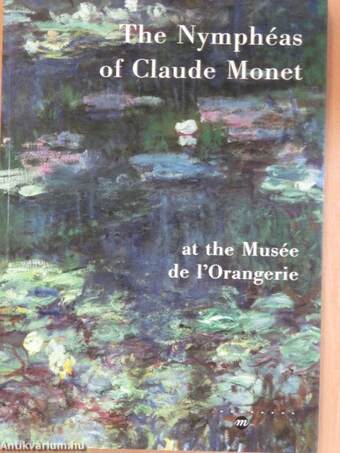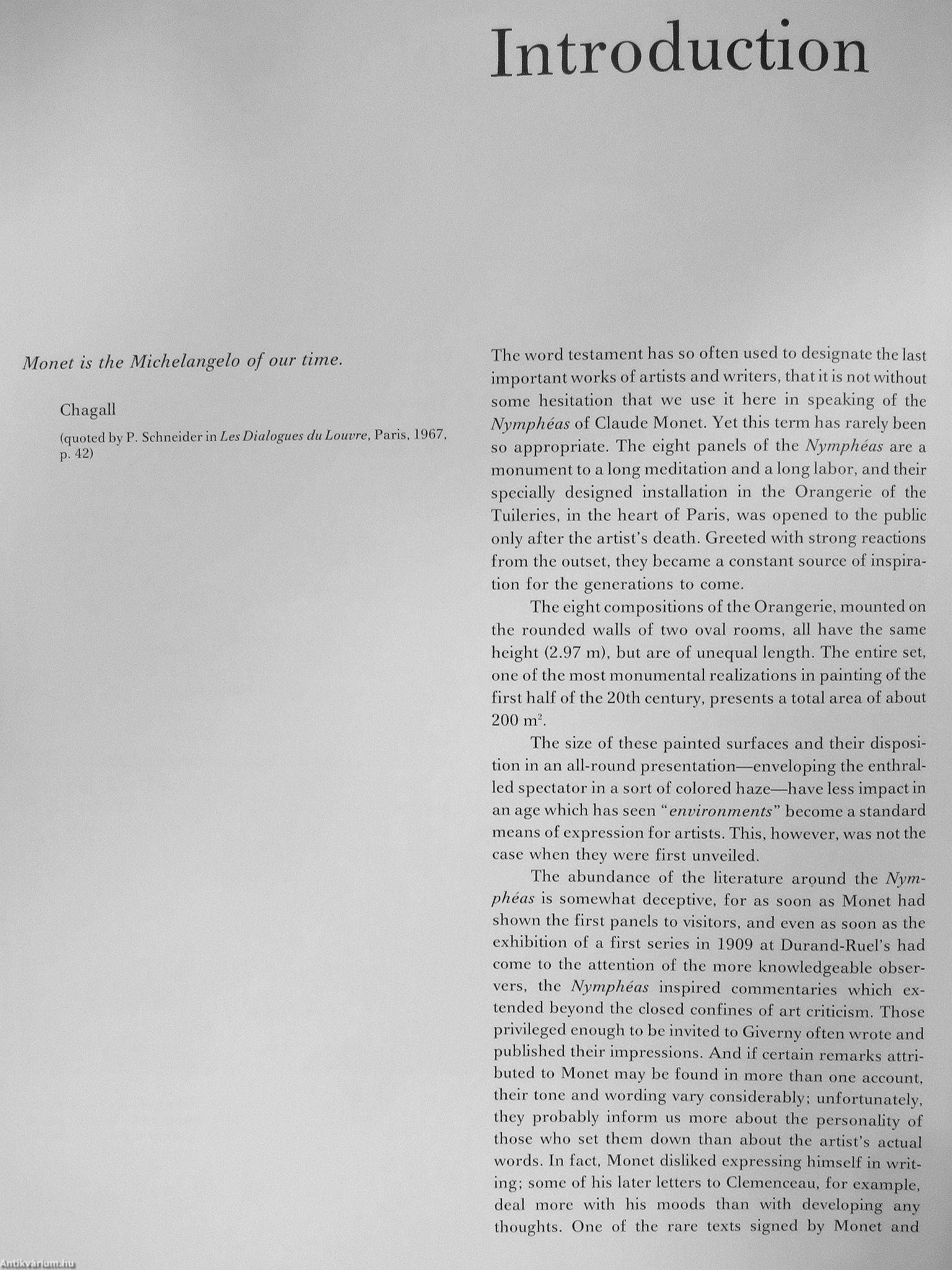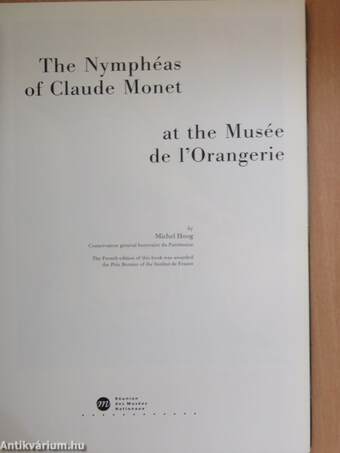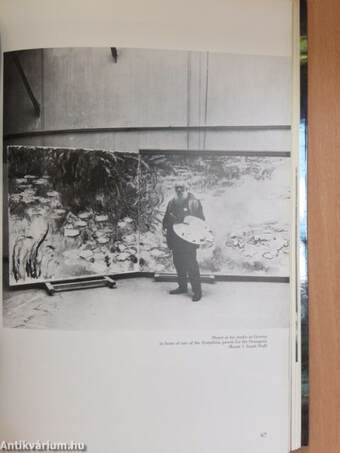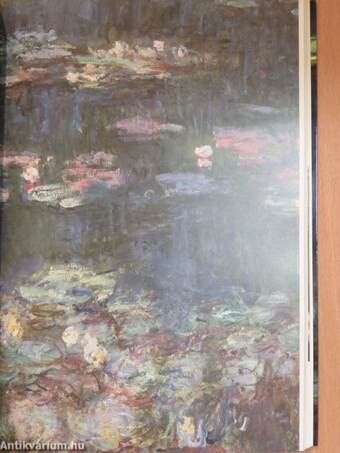1.067.674
kiadvánnyal nyújtjuk Magyarország legnagyobb antikvár könyv-kínálatát

VISSZA
A TETEJÉRE
JAVASLATOKÉszre-
vételek
The Nymphéas of Claude Monet at the Musée de l'Orangerie
Kiállítási katalógus
| Kiadó: | Réunion des Musées Nationaux |
|---|---|
| Kiadás helye: | Párizs |
| Kiadás éve: | |
| Kötés típusa: | Fűzött papírkötés |
| Oldalszám: | 121 oldal |
| Sorozatcím: | |
| Kötetszám: | |
| Nyelv: | Angol |
| Méret: | 30 cm x 21 cm |
| ISBN: | 2-7118-2092-0 |
| Megjegyzés: | Kiállítási katalógus. Néhány fekete-fehér fotóval, számos színes reprodukciókkal. |
naponta értesítjük a beérkező friss
kiadványokról
naponta értesítjük a beérkező friss
kiadványokról
Előszó
TovábbFülszöveg
The eight panels of the unique set of Nymphéas
by Claude Monet, donated by the artist to the
State and installed in the Musée de l'Orangerie
(1927) according to his directions, deserved a
detailed publication.
This book emphasizes the importance of the
Nymphéas series, inspired by the water-lily pond
that Claude Monet created in his garden at
Giverny and to which he devoted the last twenty
years of his life.
Historical and stylistic analyses, supported by a
wealth of documents, many published for the
first time, situate the Nymphéas in the painter's
work and in the art of the 20th century ; a chap-
ter recapitulates the extraordinary fascination
which these works exerted on writers—Proust,
Péguy, Claudel, Bachelard, and Michel Butor
among others—and painters alike.
Called the Sistine Chapel of abstract art by
André Masson, the Nymphéas of the Orangerie
and the other panels dispersed throughout the
world, paved the way for the painters of the fol-
lowing... Tovább
Fülszöveg
The eight panels of the unique set of Nymphéas
by Claude Monet, donated by the artist to the
State and installed in the Musée de l'Orangerie
(1927) according to his directions, deserved a
detailed publication.
This book emphasizes the importance of the
Nymphéas series, inspired by the water-lily pond
that Claude Monet created in his garden at
Giverny and to which he devoted the last twenty
years of his life.
Historical and stylistic analyses, supported by a
wealth of documents, many published for the
first time, situate the Nymphéas in the painter's
work and in the art of the 20th century ; a chap-
ter recapitulates the extraordinary fascination
which these works exerted on writers—Proust,
Péguy, Claudel, Bachelard, and Michel Butor
among others—and painters alike.
Called the Sistine Chapel of abstract art by
André Masson, the Nymphéas of the Orangerie
and the other panels dispersed throughout the
world, paved the way for the painters of the fol-
lowing generations, and in particular the French
and American abstractionists of the 50's, who
considered them as préfigurations of their own
works.
This book reproduces each of the eight panels in
its entirety and in full color for the first time af-
ter a recent cleaning restored their original bril-
liance. Their exceptional format necessitated a
presentation on folding pages.
This publication also features many
documentary photographs and much source
material. Vissza
Témakörök
- Idegennyelv > Idegennyelvű könyvek > Angol > Művészetek > Festészet
- Idegennyelv > Idegennyelvű könyvek > Angol > Művészetek > Művészettörténet, általános
- Művészetek > Művészettörténet általános > Múzeumok, képtárak > Külföldi > Európai
- Művészetek > Művészettörténet általános > Idegen nyelv > Angol
- Művészetek > Művészettörténet általános > Kiállítások, aukciók, katalógusok > Külföldi
- Művészetek > Festészet > Korszakok, stílusok > XIX. század > Impresszionizmus
- Művészetek > Festészet > Kiállítások, katalógusok > Külföldi
- Művészetek > Festészet > Idegen nyelv > Angol
- Művészetek > Festészet > Tanulmányok, összefoglalók > Külföldi
- Művészetek > Festészet > Albumok > Külföldi festők
- Művészetek > Festészet > Albumok > Tematikus albumok > Egyéb
- Művészetek > Festészet > Általános festészet > Története
Michel Hoog
Michel Hoog műveinek az Antikvarium.hu-n kapható vagy előjegyezhető listáját itt tekintheti meg: Michel Hoog könyvek, művekMegvásárolható példányok
Nincs megvásárolható példány
A könyv összes megrendelhető példánya elfogyott. Ha kívánja, előjegyezheti a könyvet, és amint a könyv egy újabb példánya elérhető lesz, értesítjük.



